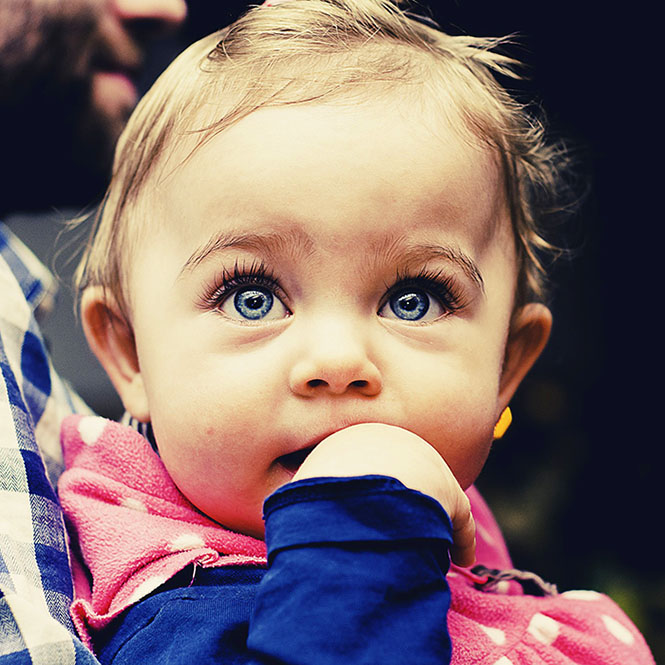Did you know that babies have to learn how to see, just as much as they have to learn how to walk and talk? 80% of all learning comes through the eyes.
That’s right, learning how to use their eyes and understand what they’re seeing is a process. There’s a lot we can do as parents to help them develop essential visual skills — everything from choosing the right toys for their age to knowing when it’s time to move on from playing peek-a-boo with them.
Newborn Eyesight: the First Six Months
An infant sees a world of light, shadows, and blurry shapes. They can only focus on objects 8-15 inches away — the perfect distance for looking at the face of the person holding them! Over time, their eyesight grows clearer and sharper, and there are a few things you can do to help:
- Encourage them to learn how to track movement with their eyes by moving objects in front of them
- Give them plenty of color to look at. Their color vision will take a few weeks to begin developing, and then they won’t be able to get enough of those bright colors, which is why they love to look at mobiles so much.
- Play peek-a-boo! This doesn’t just get them to laugh and make adorable surprised faces; it’s helping them learn to focus their eyes.
Quick Learners: 6-12 Months
By this point, your baby will begin developing hand-eye coordination, and you can help them along by giving them plenty of colorful objects to grab and play with. Crawling helps develop their coordination too, but it might take a couple of bumps on their cute noggins before they remember that their heads don’t stop at their eyes!
Around this age, you’ll probably notice that your baby isn’t so entertained by peek-a-boo anymore. This is because they’ve learned object permanence. They understand that Mommy and Daddy didn’t just blink out of existence like wizards when they went behind their hands. A good new game to play at this point is hide-and-seek, hiding a toy under a blanket and challenging them to find it.
Toddlerhood and Advanced Visual Skills
Around the time your baby learns to walk, they will be able to further improve their hand-eye coordination by throwing, bouncing, and chasing balls. Their visual skills in this area are tied to other important skills like comprehension and balance. As their vocabularies develop, they’ll be able to start putting names to objects.
By about age two, they’ll begin to discover their burgeoning artistic abilities, so make sure to provide them with drawing materials. Wooden blocks or interlocking blocks will be excellent toys for them at this age as well.
The Role of Eye Exams in Baby Eye Health
Learning is a social process conducted, either more or less directly, by observing other humans. 80% of all learning comes through the eyes. People begin to learn by trying to model others, then take on more complex activities as they grow in confidence.
On top of providing your children with the right types of toys to encourage their developing visual skills, it’s also important to bring them in for eye exams. Unlike older children, who have the words and understanding to tell you when something’s wrong with their vision, babies and toddlers are fully dependent on adults to figure out when there’s a problem. This is why scheduling their first eye exam for around six months old is so important!

